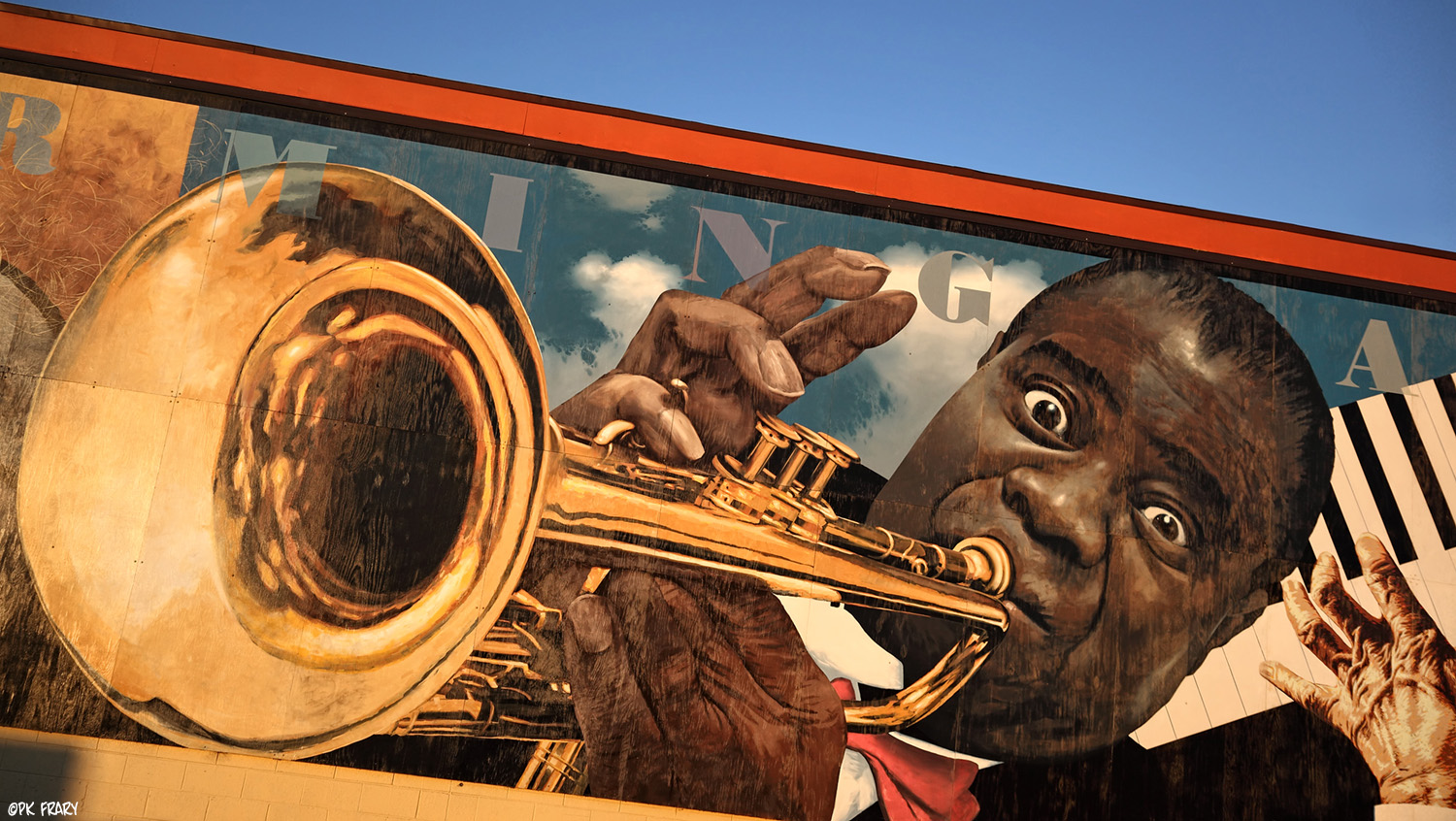|
|
||||||||||||||||||||||||
|
3 | Music In The 20th CenturyDawn of Blues and JazzPeter Kun Frary
.
|
I |
|||
IV |
I |
||
V |
IV |
I |
Here's how the above 12-bar blues progression sounds:
Ukulele Blues | Peter Frary
There are many variations on the blues form but the basic 12-bar framework remains the same.
Blue Notes
Blue notes are another important trait of blues (and rock and jazz): the third and/or fifth of the scale is lowered in pitch, often varied at a microtonal level, creating a uniquely colored scale. Listen to the blues scale:
Blues Scale

Blues shuffle rhythm and walking bass create a trance-like rhythm or repetitive effect called the groove. Shuffle rhythm is similar to jazz swing: eighth notes are played with a triplet feel. Walking bass is a continuous sequence of quarter or eighth notes using mostly stepwise and arpeggio motion.
The audio track below, Accidental Blues, has a 12-bar blues progression (2X) with both the shuffle rhythm and walking bass. The first 12 measures demonstrate a standard root-fifth bass, similar to bass lines in country and traditional Hawaiian music. The bass begins to walk in a shuffle rhythm in the second half of the track.
Accidental Blues | Peter Kun Frary
Blind Willie Walker
We begin with an early blues work, Dupree Blues by Blind Willie Walker (1896-1933). Willie was an American guitarist and singer who played the Piedmont blues style. This genre revolves around finger style guitar: the right hand thumb plays a bass line while fingers pluck a syncopated melodic line or chords. The sound is similar to ragtime piano but more folksier and played within the blues form. This style is called country blues.
The Dupree Blues features a lengthy guitar introduction, solo interludes, and call-and-response between Blind Willie and another singer. The lyrics speak of the hard living of the 1930s: love, love lost, robbery, and prison.
Dupree Blues (c. 1930) | Blind Willie Walker | Wikimedia Commons (3:30)
B.B. King
Now we jump to a modern rendition of the blues: The Thrill is Gone by B.B. King. The performance is slick and edited to perfection. However, the blues is alive and well in this song: 12-bar blues form, groove, blue notes, and dark lyrics.
The Thrill Is Gone | B.B. King and Tracy Chapman (3:47)
Next, we'll listen to musicians who adopted the blues but repackaged it for mass consumption by middle-class white audiences. This more commercial and marketable blues-influenced music is known as rock and roll.
Jerry Lee Lewis and Rock 'n' Roll
During the 1940s and 1950s, largely due to radio, blues spread beyond the African American population, morphing into new forms. One can trace a direct line from the blues to early forms of rock and roll as practiced by mid-century artists such as Elvis, Chuck Berry, Howlin' Wolf, Johnny Cash, Carl Perkins, and Roy Orbison. One of the first great rockers was singer and pianist Jerry Lee Lewis (1935-2022), a man at the forefront of rock and roll during its formative years.
Jerry Lee Lewis | Publicity photo of Lewis, c. 1950s | Wikimedia Commons
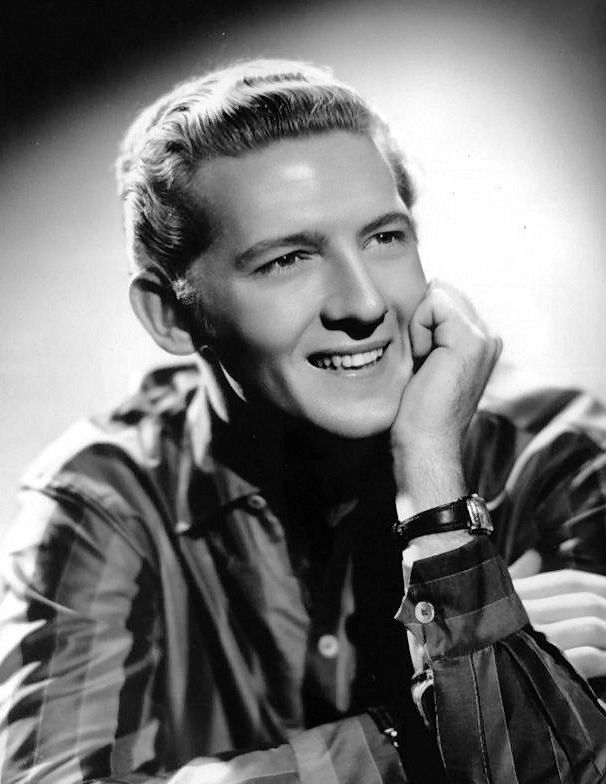
Jerry Lee Lewis, cousin of country artist Mickey Gilley and televangelist Jimmy Swaggart, grew up in a Pentecostal church in Louisiana, where his mother was a preacher. He attended Southwest Bible Institute (Assemblies of God) in Texas, but was expelled for playing "worldly" music. Lewis taught himself to play the piano by jamming with his cousins, Mickey and Jimmy, and watching musicians in church and African American juke joints.
Blues, country and western, and gospel were Jerry's main musical influences. He injected this music with driving rhythm and, for the 1950s, controversial sexual energy and showmanship. This new style of music was labeled rock and roll. Some musicologists categorize early rock songs with blues and country influences, e.g., Whole Lotta Shakin' Goin' On, Great Balls of Fire, and Nothin' But a Hound Dog, as rockabilly (literally, hillbilly rock).
At the age of 25, Lewis struck gold with a rock genre defining hit—Whole Lotta Shakin' Goin' On—propelling his career into the stratosphere. During a Rolling Stone interview years later, Lewis says “I can’t picture Jesus Christ doin’ a whole lotta shakin’.” During the 1950s, rock and blues styles were considered demonic in Pentecostal and Evangelical churches, placing Lewis at odds with his family and Christian faith.
Whole Lotta Shakin' Goin' On | Jerry Lee Lewis performing his first rock and roll hit in 1957 (1:47).
A classmate from Bible college, Pearry Green, met Lewis years later and asked if he was still playing the devil's music. Lewis replied, "Yes, I am. But you know it's strange. The same music that they kicked me out of school for is the same kind of music they play in their churches today. The difference is, I know I am playing for the devil, and they don't." (Hillel Italie, Associated Press, Oct. 28, 2022)
Great Balls Of Fire | Jerry Lee Lewis playing his rock and roll hit in 1957 (1:47).
Despite a life of hard living—scandals, drug and alcohol abuse, legal battles, arrests, and seven marriages—Jerry Lee Lewis died peacefully at home at the age of 87 in October 2022. In the months prior to his passing, he recorded a gospel album with his televangelist cousin, Jimmy Swaggart. The Telegraph's Neil McCormick described Lewis as "...a gun-toting, fire-starting ball of trouble. He was also the most authentic rocker who ever lived."
Jerry Lee Lewis was inducted into the Rock and Roll Hall of Fame in 1986 and given a Grammy Lifetime Achievement Award in 2005.
Stevie Ray Vaughan
Texan Stevie Ray Vaughan (1954-1990) was a proponent and virtuoso player of the rock blues, an electrified and more driving form of the blues. Vaughan is best known as the front man and guitarist of the band Double Trouble.
Double Trouble | Chris Layton, Stevie Ray Vaughan and Don Hunstein | Wikimedia Commons
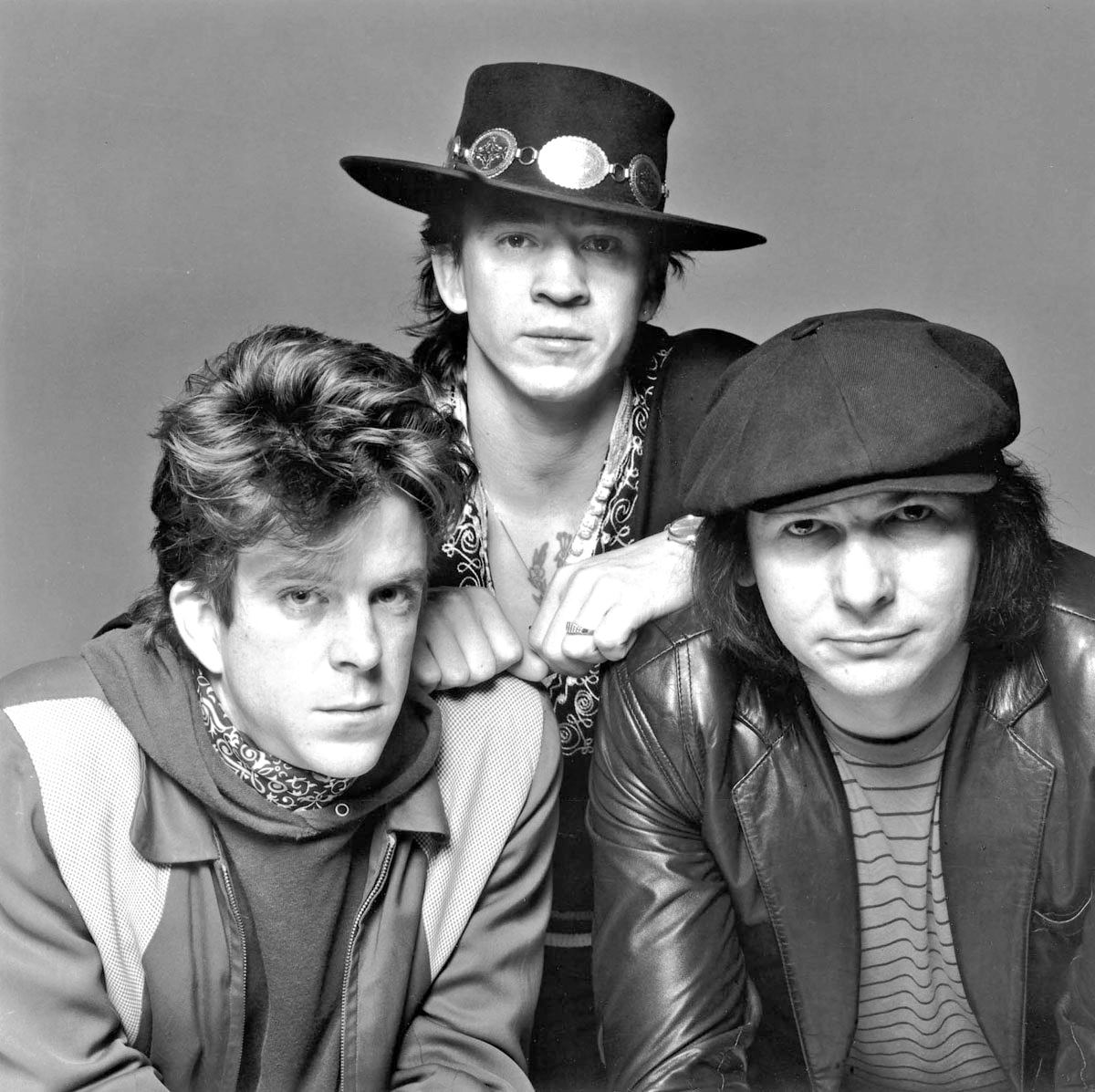
Texas Flood | Stevie Ray Vaughan, 1954-1990 | 1989 Presidential Inaugural Concert for George H.W. Bush (6:09)
Although Vaughan's musical career only spanned seven years, he is among the greatest blues/rock guitarists of the twentieth century. Stevie, at the peak of his career, died tragically in a helicopter crash in 1990.
Salvation Blues | Portland, Oregon | ©Peter Kun Frary
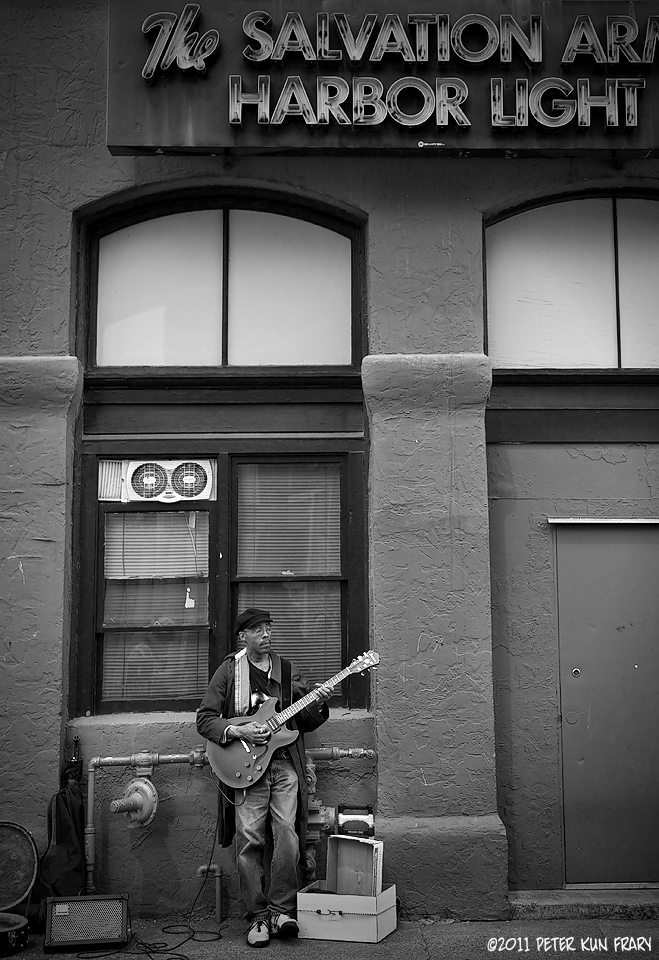
American Jazz
Jazz is an American style originally created by African American musicians playing in bars, brothels, and dance halls in New Orleans and other Southern cities during the early twentieth century. Although influenced by blues, ragtime, gospel, and European popular music, jazz was more spontaneous, mainly instrumental, often virtuosic, and heavily reliant on improvisation.
Like French Impressionistic composers, jazz musicians broke the Classical and Romantic rules of melody, harmony, orchestration, and meter. Although jazz is played on standard Western instruments such as the piano, trumpet, and guitar, the style evolved from elements of West African, North American, and European music intermingling in southern Black communities.
West African music traits found in jazz include an emphasis on improvisation, unique timbres, drumming, percussive timbres, blue notes, a steady beat, rhythmic complexity, and the use of the call-and-response technique. Listen to a big band, and you'll often notice a sophisticated harmonic and textural structure more akin to Impressionism than blues.
Sax Section of the International Sweethearts of Rhythm, c. 1944 | Jazz was all the rage during the 1930s and 40s and groups like the International Sweethearts of Rhythm toured both nationally and internationally. | National Museum of American History, Archives Center
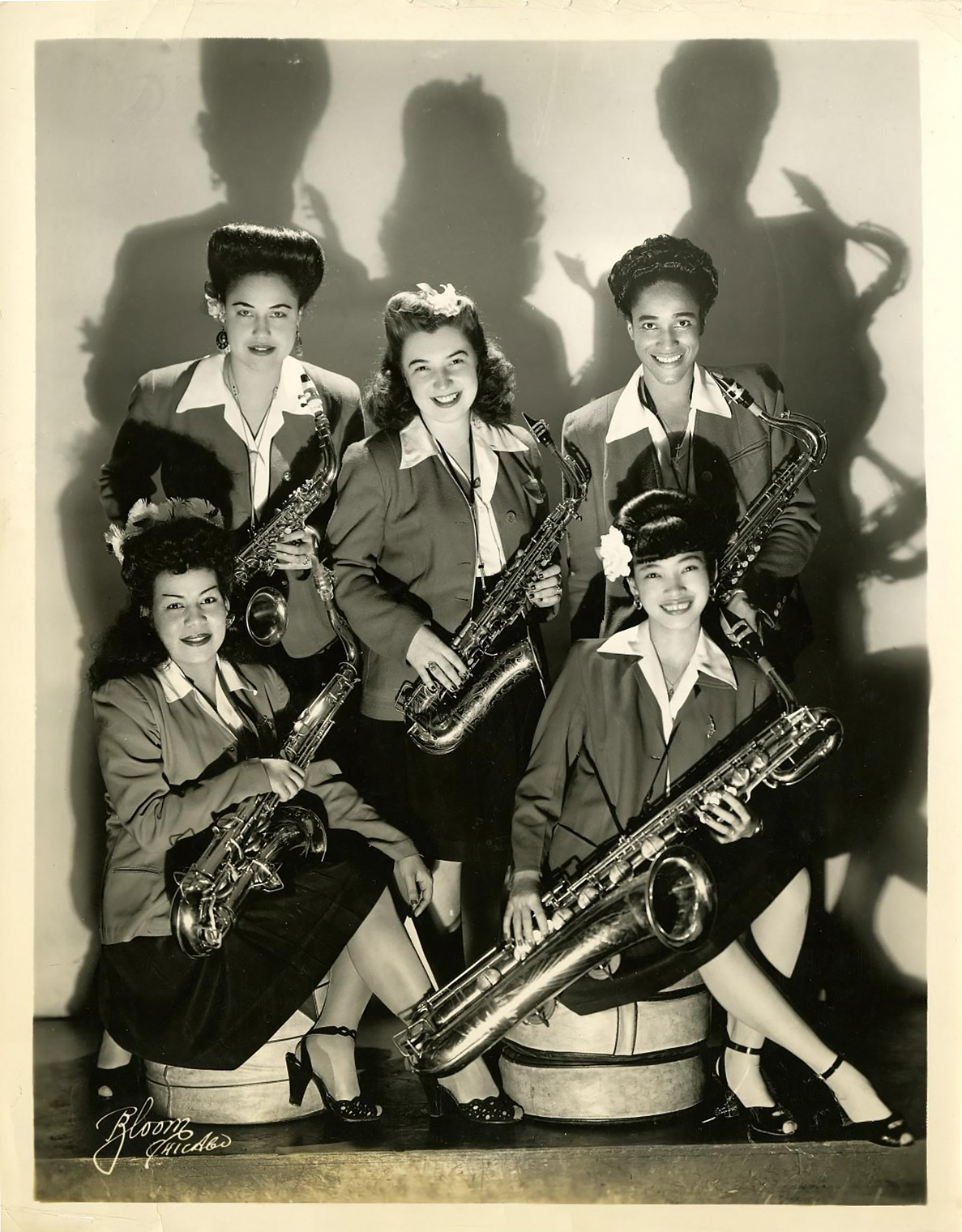
 Big Band
Big Band
Due to ease of travel and the advent of recorded media and radio, jazz spread rapidly, becoming a worldwide phenomenon. Big band ensembles like the Duke Ellington Orchestra and International Sweethearts of Rhythm toured relentlessly from the 1930s and onward. A big band is a jazz ensemble that typically consists of ten or more musicians with four sections: saxophones, trumpets, trombones, and a rhythm section made up of bass, drums, guitar, and/or piano.
International Sweethearts of Rhythm
The International Sweethearts of Rhythm were the first racially integrated all-female jazz band to tour nationally, operating from 1938 to 1946. During this era in American culture, female musicians were largely relegated to singing, and professional female instrumentalists, especially brass, were rare.
The boom years for the International Sweethearts of Rhythm came during World War II, when many male musicians were serving in the armed forces, yielding opportunities for female musicians. The group employed some of the best female jazz artists of the time. A standout member was trumpeter Ernestine “Tiny Davis” Carroll, sometimes referred to as a female Louis Armstrong.
Listen to the International Sweethearts of Rhythm play a jazz swing piece, "She's Crazy With The Heat," complete with solo improvisations from section leaders:
She's Crazy With The Heat! | International Sweethearts of Rhythm, 1945 (2:39)
Duke Ellington
The jazz classic, Take The A Train by Duke Ellington, exhibits the above jazz characteristics in textbook fashion:
Take The A Train | Duke Ellington and his Orchestra, 1962 (2:52)
Duke Ellington (c. 1940) | Big-band leader and pivotal figure in jazz history | Wikimedia Commons
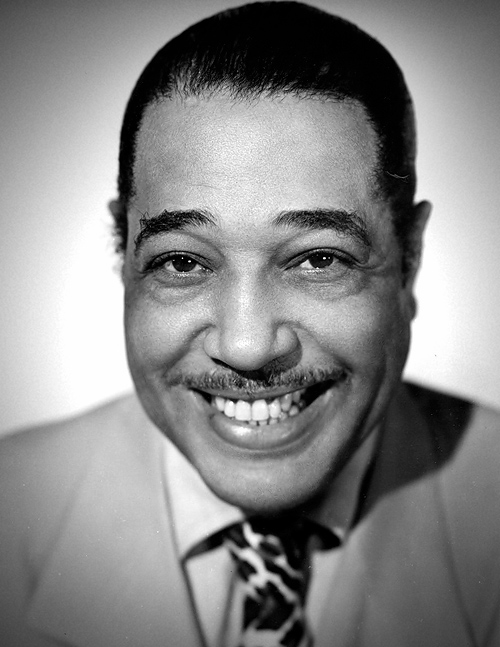
Duke Ellington, 1899-1974, was an American composer, pianist, and director of a jazz orchestra, which he led from 1923 until his death in 1974. He was a preeminent figure in jazz history, writing over one thousand compositions, many of which are considered to be jazz standards decades after his death.
Etude pour Musique à la campagne (1948) | Raoul Dufy, 1877-1953 | Centre Pompidou
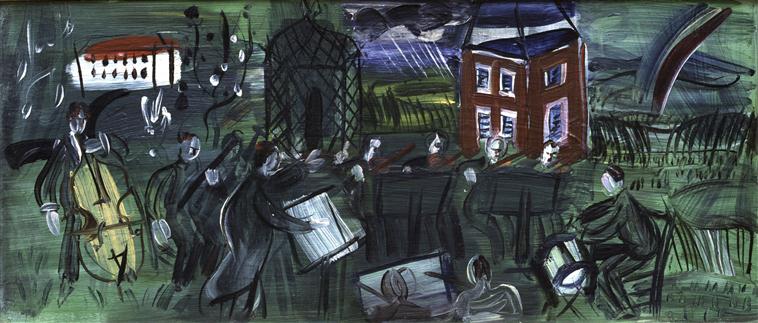
 Jazz Styles
Jazz Styles
As jazz came into contact with different cultures, it developed a variety of sub-styles such as Dixieland, swing, Gypsy, bebop, cool, fusion, acid, Latin, etc. However, the essence of jazz remained uniquely American: strongly rooted within the Black experience of the United States and steeped in the melting pot of cultures that define and enrich our nation.
John Coltrane (1926-67) | US saxophonist and composer | Wikimedia Commons
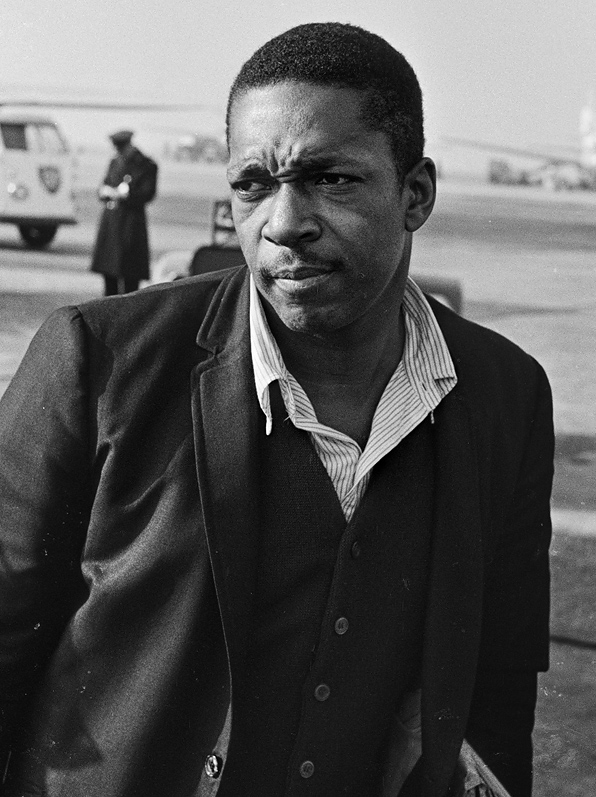
John Coltrane
Saxophonist and composer John Coltrane (1926-67) was a pivotal force in the bebop jazz style of the mid-twentieth century. He pioneered the use of modal scales (similar to plainchant modes) in jazz and was at the forefront of free jazz during his later years. Note the intermingling of modal scales, blue notes, and walking bass in the highly caffeinated groove of Coltrane's classic, Impressions, played here by his contemporary, Wes Montgomery, in 1965:
Impressions | John Coltrane, 1926-67 | Wes Montgomery, 1923-68 (3:37)
Wes Montgomery
USA musician, Wes Montgomery, is one of the most influential jazz guitarists of the mid-twentieth century. Although a technical and musical tour de force, Montgomery used an 'ukulele-like right-hand technique of plucking the strings with his thumb rather than using all the fingers or a pick.
American guitarist Pat Martino (1944-2021) plays his rendition of Wes Montgomery's classic, Full House:
Full House | Wes Montgomery | Pat Martino and company (7:48)
Pat Martino
Martino's career came to an abrupt halt in 1980 when an aneurysm left him with amnesia and no recollection of his life or how to play guitar. After emergency brain surgery, he learned how to play guitar by studying his recordings and, after months of intense practice and therapy, regained his musical abilities. Martino passed away in 2021, but is one of the top jazz guitarists of all time.
Jazz Guitar | James D'Aquisto, 1935–1995 | Arch top guitars were favored by jazz guitarists for their tone | Metropolitan Museum of Art
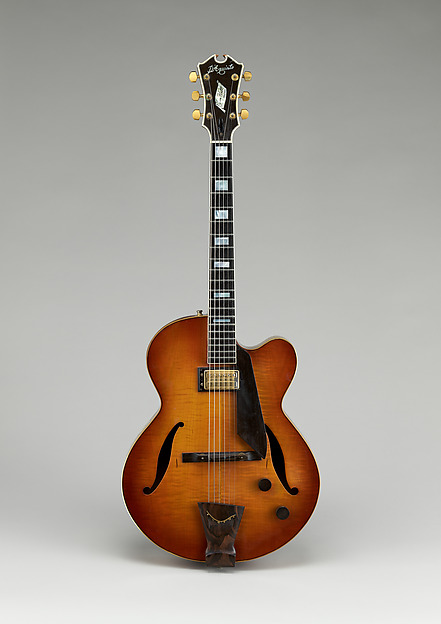
Last Blurb
Jazz evolved into many sub-styles during the twentieth century: swing, cool, bebop, fusion, free, et cetera. Indeed, jazz continues to evolve in the twenty-first century and is played far beyond the shores of the Americas where it was born.
Vocabulary
call-and-response, blues, blues scale, blue notes, blues shuffle rhythm, walking bass, Piedmont blues style, country blues, rock and roll, rockabilly, jazz, big band
 |
 |
©Copyright 2018-25 by Peter Kun Frary | All Rights Reserved
